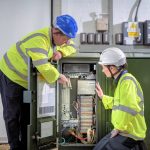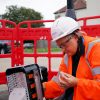Study Claims 29% of UK Mobile Users Suffer Poor or No Indoor Signal
A new survey conducted by uSwitch.com, which fielded responses from a “nationally representative” sample of 2,002 UK adults, has claimed that 29% of Mobile Phone (2G, 3G and 4G) users suffer from poor or no indoor reception at home. This rises to 50% for those living in rural areas.
The survey also states that 57% of mobile users claim to have experienced patchy call quality, while 43% have had calls cutting out and 37% suffered no reception at all when trying to make or take calls at home. Sadly those living in rural areas were more likely to report poor or no mobile reception in their own homes, although there has been an improvement since last year.
| Where do you live? | % reporting poor / partial / no indoor reception (2017) | % reporting poor / partial / no indoor reception (2016) |
| City centre / inner city | 32% | 41% |
| Urban area, but not inner city | 26% | 30% |
| Suburban area | 21% | 28% |
| Village or small town | 33% | 35% |
| Rural area | 50% | 52% |
On a regional basis, those in Bristol reported receiving the worst indoor mobile reception (39%), followed by people living in Cardiff (35%), Norwich (35%), Plymouth (33%), Sheffield (33%) and London (30%); sadly the sample size appears to have been too small to return data for the rest of the United Kingdom.
Advertisement
Meanwhile it’s interesting to note that, on a network operator basis, O2 customers were found to be the most likely to report their coverage as “excellent” (71%). On the other hand the difference between operators’ is surprisingly small.
| Network | % reporting ‘excellent’ indoor mobile reception | % reporting poor / partial / no indoor mobile reception |
| EE | 68% | 32% |
| O2 | 71% | 30% |
| Three UK | 68% | 32% |
| Vodafone | 69% | 31% |
Of those that suffer poor reception at home, 36% said they have to visit specific parts of their house to make calls, while 32% rely on landlines and 30% connect to home WiFi for calling apps like FaceTime, Whatsapp or Skype etc.
In fairness, delivering reliable indoor reception is incredibly difficult, not least because every property is different and not all spectrum bands are able to effectively penetrate through walls (higher frequencies like 2.6GHz+ tend to struggle, while lower frequencies like 800MHz find it a lot easier). Homes with thick walls or walls that contain a lot metal (e.g. chicken wire / mesh) can be particularly challenging.
Elsewhere over a quarter (27%) said they have to go outside to make calls. Outside of their homes, some 73% of UK mobile users reported that they experience patchy or poor mobile service on a day-to-day basis, while 30% claim to suffer poor voice call reception on trains and 34% had difficulties with their phone signal in public spaces.
Advertisement
The Government has previously said that they want 98% of the UK’s population to be able to connect (outdoors) to a 4G network by the end of this year, although geographic reach will continue to stay well below this (here). However we do note that EE intends to extend the geographic reach of their 4G network to 95% by the end of December 2020.
Some mobile operators also sell indoor signal boosters, which can harness your fixed line broadband connection in order to improve mobile reception, and Ofcom has just relaxed their rules on similar devices (here). Sadly anybody hoping for future 5G Mobile services to deliver a magic fix may be disappointed. Aside from the bonus of being able to harness the 700MHz band to boost coverage, most of the fastest 5G connectivity will ultimately be delivered via even higher frequencies (upwards of 3.4GHz) and we’ve already highlighted the problem with those.
One way to improve the situation would be to attach tougher coverage obligations to certain bands at auction, although there is unlikely to ever be an agreement that can truly guarantee indoor coverage (mobile signals are simply too variable and subject to various unpredictable factors within the environment); it’s those pesky laws of physics again.
We should also point out that related problems can also be caused by the Phone itself or a bad configuration / SIM.
Advertisement
Mark is a professional technology writer, IT consultant and computer engineer from Dorset (England), he also founded ISPreview in 1999 and enjoys analysing the latest telecoms and broadband developments. Find me on X (Twitter), Mastodon, Facebook, BlueSky, Threads.net and Linkedin.
« Virgin Media and Plusnet Come Top in 2017 Customer Survey of UK ISPs


















































Comments are closed